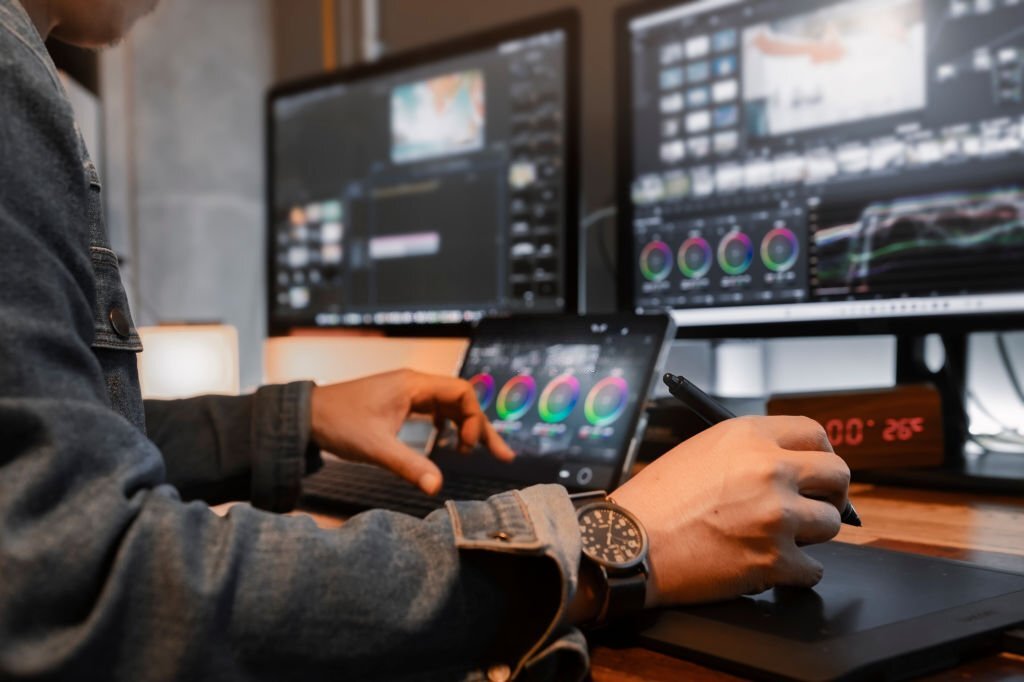
Understanding Video Editing: A Comprehensive Overview

“In today’s digital era, captivating videos have the potential to amass significant social followings.”
Mike Henry
In our digitally driven world, people are drawn to visually engaging videos. However, creating compelling videos is not an instant process; it involves a meticulous refinement journey before reaching the audience. Effective video editing plays a pivotal role in this journey. Let’s delve into the fundamentals of video editing through this informative guide.
Defining Video Editing
Video editing is a complex and technical art form that entails rearranging, adding, or removing segments of raw video and audio clips. It goes beyond these basics, encompassing tasks such as color correction, filter application, sound design, and various enhancements. The objective is to transform raw footage into visually appealing, engaging, and compelling videos. It is a creative and artistic process involving subtle to significant alterations to convey messages, entertain, and inspire. Video editing is typically a part of the post-production phase, alongside titling, color correction, and sound mixing.
The Roles of a Video Editor
A video editor is responsible for making production and post-production modifications to a film. Collaborating closely with the director, their aim is to present a story in the most effective and captivating manner. Video editors perform tasks ranging from combining multiple clips, adjusting audio levels, altering video speeds, to applying color correction, lighting adjustments, and background removal. Advancements in technology have democratized video editing, allowing individuals with minimal skills to produce professional-quality content. Key roles of a video editor include maintaining the director’s vision, meticulous editing, managing angles and points of view, and refining post-production elements.
Essential Features and Techniques of Video Editing
Whether you’re editing short videos, creating YouTube content, personal projects, or short films, mastering essential features and techniques is vital to bring your creative vision to life. Here are critical features to grasp:
Cutting
Involves cropping, splitting, and trimming clips to achieve a desired sequence and remove unnecessary scenes.
Transition
Adds visual effects between clips for smooth scene transitions.
Color Correction
Adjusts brightness, saturation, hues, contrasts, and more to achieve the desired visual aesthetic
Sound Editing
Incorporates music, sound effects, volume adjustments, and effects to enhance audio quality and immerse viewers.
Adding Text
Involves overlaying text onto clips for explanations, information, subtitles, or transition markers.
Key Framing
Allows precise adjustment of visual effects by using keyframes for a polished result.
Video Upscaling
Enhances video resolution using AI-based upscaling tools for improved quality.
Speed & Slow Motion
Alters clip pace and duration, creating dramatic effects, emphasizing moments, and building tension.
Green Screen & Chroma
Replaces backgrounds with other images or videos, ideal for creating realistic or fantastical scenes.
Steps to Initiate a Video Editing Project
To embark on a video editing project, follow these foundational steps:
- Select suitable editing software.
- Plan and prepare to achieve your final product.
- Import raw materials.
- Assemble and sequence clips.
- Fine-tune adjustments as needed.
- Carefully edit audio.
- Apply color correction.
- Review the entire project.
Tools for Video Editing
Choosing the right video editing tool is crucial. Consider your needs, budget, and ease of use. Popular options include:
- Adobe Premiere Pro
- Final Cut Pro
- Wondershare Filmora
- Lumen5
Career Paths in Video Editing
For those interested in pursuing a career in video editing, here are three primary options:
- Video Editors
- Video Managers
- Motion Graphic Designers
Seeking Professional Video Editing Services
If you require video editing services to enhance your business or personal content, consider reaching out to H Art and Ads Their innovative and high-tech video editors can transform raw footage into compelling masterpieces that captivate audiences. Remember the name; you won’t be disappointed!


Understanding Video Editing: A Comprehensive Overview


